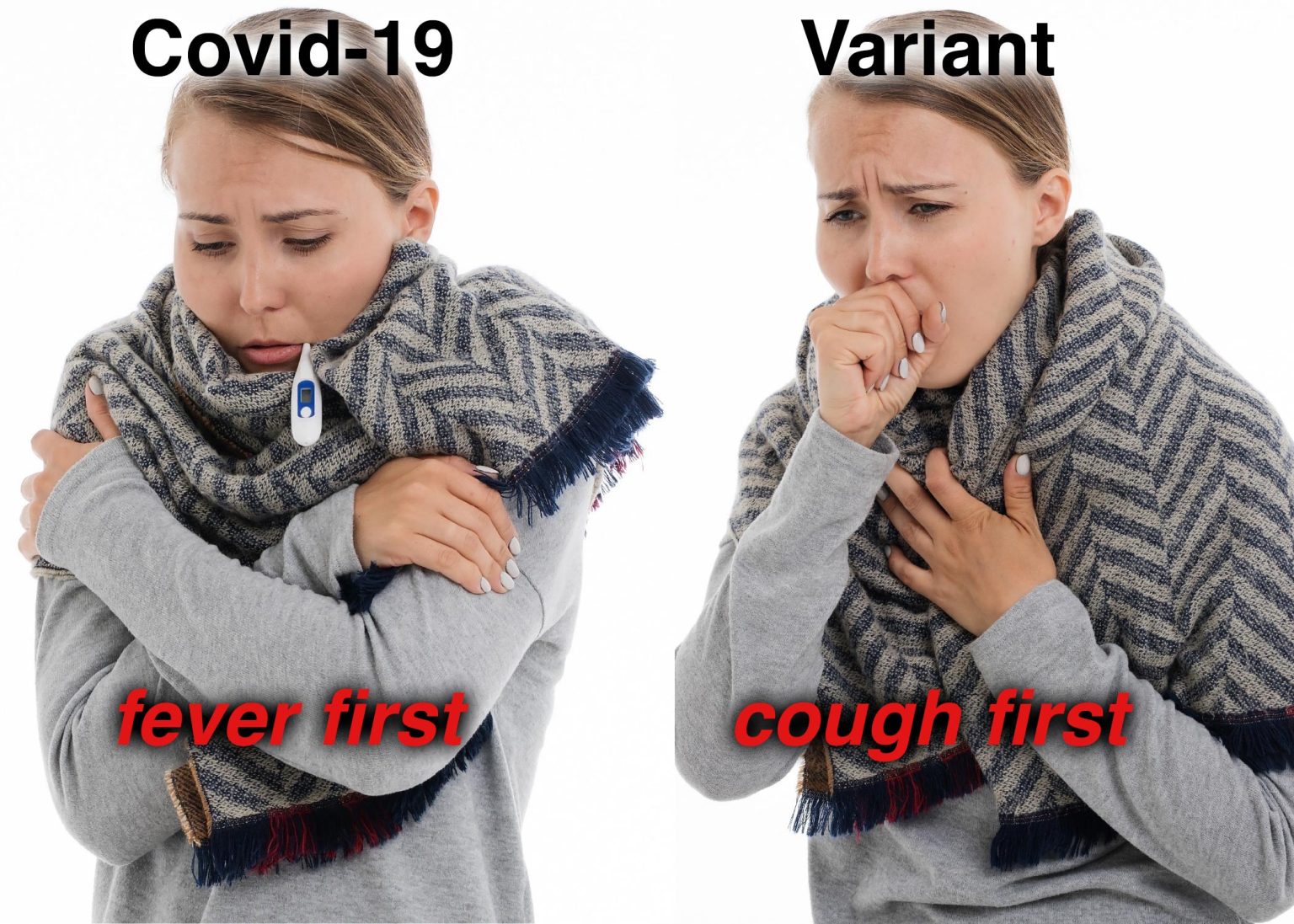Your Likely Order of COVID-19 Symptoms Depends on the Variant
By PLOS

Fever was the most likely first symptom in early cases of COVID-19, whereas cough is the most likely first symptom in more recent D614G variant cases. Credit: Peter Kuhn
The researchers previously developed a mathematical model predicting the order of COVID-19 symptoms based on data from the initial outbreak in China in early 2020.
In the new work, they wanted to know whether the order of symptoms varied
in patients from different geographical regions or with various patient
characteristics. They used their modeling approach to predict symptom order in
a set of 373,883 cases in the USA between January and May 2020.
Surprisingly, the most likely symptom order differed between the initial outbreak in China—where fever most often preceded cough, and nausea/vomiting was a common third symptom—and the subsequent spread to the USA, where cough was most likely to be the first symptom, and diarrhea was a more common third symptom.
By analyzing additional data from Brazil, Hong Kong and Japan, the team showed that the different orders of symptoms were associated not with geographic region, weather, or patient characteristics, but with SARS-CoV-2 variants.
The presence of the D614G variant in an area—which was predominant in the USA in early 2020—was associated with a higher likelihood of cough being the first COVID-19 symptom experienced by patients. As Japan shifted from the original Wuhan reference strain to the D614G variant, symptom order shifted as well. The increased transmission of D614G could be linked to the symptom order, the authors hypothesize.
“These
findings indicate that symptom order can change with mutation in viral disease
and raise the possibility that D614G variant is more transmissible because
infected people are more likely to cough in public before being incapacitated
with fever,” they say.
For
more on this study, see Researchers May Have
Discovered Why First COVID-19 Wave Spread So Fast in US and Europe.
Reference:
“Modeling the onset of symptoms of COVID-19: Effects of SARS-CoV-2 variant” by
Joseph R. Larsen, Margaret R. Martin, John D. Martin, James B. Hicks and Peter
Kuhn, 16 December 2021, PLOS Computational Biology.
DOI:
10.1371/journal.pcbi.1009629